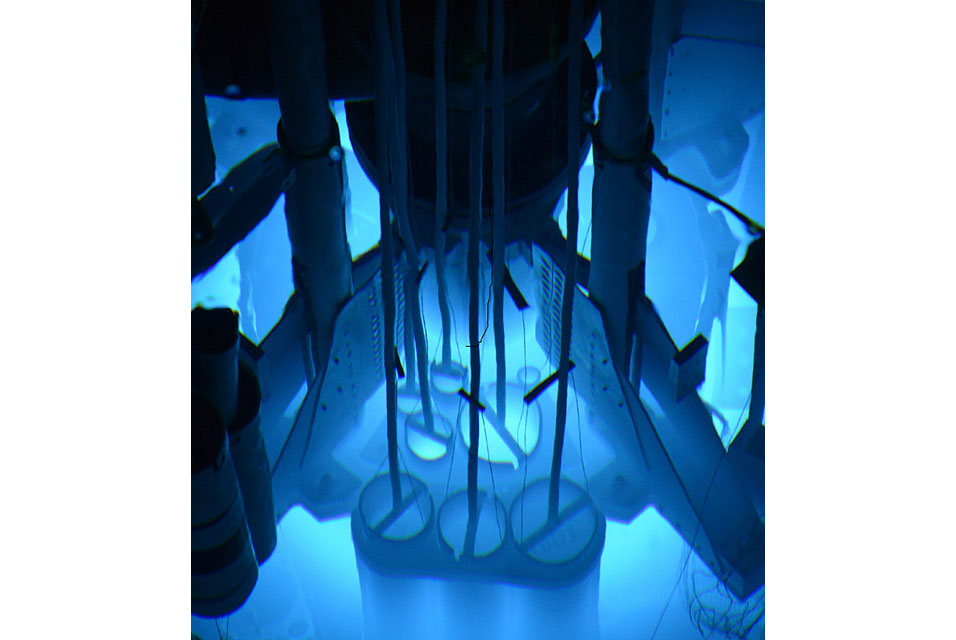COLUMBIA, MO.- The
University of Missouri Research Reactor (MURR®) has entered into an exclusive multi-year agreement with Advanced Accelerator Applications International, SA (AAA), a Novartis company, to provide a key ingredient in a targeted therapy for certain types of cancerous tumors. The agreement covers medical markets in the U.S. and around the world, standing as another example of the industry collaborations and advancements made possible by the University of Missouri System’s NextGen Precision Health initiative. Under the terms of the agreement, AAA will have the ability to use or sublicense the associated intellectual property in order to separately manufacture ‘no-carrier added’ Lutetium-177.
Lutetium-177 (Lu-177), a radioisotope, is a key ingredient in Advanced Accelerator Applications USA, Inc.’s (AAA USA) targeted cancer therapy, Lutathera® (lutetium Lu 177 dotatate). Lutathera® is used to treat certain types of neuroendocrine tumors of the gastrointestinal tract and pancreas. As the most powerful university research reactor in the U.S., MURR has been providing the radioisotope to AAA USA since 2017, when it signed an agreement as the sole U.S. supplier of Lu-177 to AAA USA for use in Lutathera®.
Now, this new agreement allows MURR to supply AAA with no-carrier added Lu-177 (NCA Lu-177), eliminating any traces of long-lived isotope. This version is the key ingredient in an investigational therapy in development for advanced prostate cancer, a “radioligand” therapy intended to deliver Lu-177 to the cancer. The radioisotope and the treatments it makes possible are examples of the bench-to-bedside approach of the Precision Health initiative, which aims to translate breakthroughs in the lab into direct benefits for patients.
“MURR has developed a proprietary process that significantly improves the production of no-carrier added Lu-177,” said J. David Robertson, Ph.D., director of MURR. “We are pleased this agreement also allows MURR to supply NCA Lu-177 for non-commercial academic and clinical research as we fulfill our mission.”
This agreement does not replace MURR’s current agreement to supply AAA USA with Lu-177 for Lutathera®. MURR’s ability to reliably deliver large amounts of radioisotopes was a key factor in AAA choosing MURR as a supplier.
“We are committed to making targeted radioligand therapies broadly available to cancer patients in need,” said Sidonie Golombowski-Daffner, Ph.D., president of AAA. “This collaboration complements our ongoing investment in state-of-the-art facilities supporting the development and production of radioligand therapies for the future, such as our recently announced manufacturing site in Indiana. Access to no-carrier added technology offers us maximum flexibility and further strengthens our ability to expand our development pipeline and support future product launches.”
Researchers at MU first identified the potential of Lu-177 as an anti-cancer treatment nearly 20 years ago, and MURR has been a crucial component for research at the university for more than 50 years. Operating 6.5 days a week, 52 weeks a year, scientists from across the campus use the 10-megawatt facility to not only provide crucial radioisotopes for clinical settings globally, but also to study artifacts, improve medical diagnostic tools and prevent illness.
“With another major collaboration under its belt, MURR continues to be a nationwide leader in conducting university reactor research and driving industry growth,” said Mun Choi, president of the UM System and chancellor of MU. “The Precision Health initiative at the UM System is all about using the up-to-date, state-of-the-art science and technology to solve the world’s health crises, and this industry collaboration — made possible by the discoveries of MU researchers almost two decades ago — shows how we are fulfilling that mission.”










